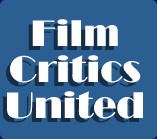

Reviewed by
Bud Carlson


QUICK
THOUGHTS: “Tristam Shandy: A Cock and Bull Story” is a good
movie, very funny, but probably not for everyone. It’s a British
film, replete with British humor and British stylings. It’s a
movie about a couple of actors who are involved in the filming of the
movie for “Tristam Shandy,” which you may recognize as the
book that was nothing more than a stream of consciousness, and that
most have long agreed is not filmable. It’s an absurd movie about
an absurd pair of actors who are involved in the filming of an absurd
movie. If you like Samuel Beckett’s “Waiting for
Godot” or Tom Stoppard’s “Rosencrantz and
Guildenstern are Dead” or others like that, this movie will be
right up your alley, and you should rush right out and see it. May
people hate that type of stuff, and they should just move along and
read a review for another movie.
EXTENDED
REVIEW: “Tristam Shandy: A Cock and Bull Story” is an
utterly absurd movie, with absurd characters who are attempting to make
an absurd movie. It’s a movie-within-a-movie-within-a-movie
thing! But I liked it. A lot.
The movie is about a production team who are trying to make a movie adaptation of the book “The Life and Opinions of Tristam Shandy, Gentleman,” an 18th century novel by Laurence Sterne. By way of background, the book is a novel consisting of a wandering, stream-of-consciousness narration that is nearly entirely without plot. In the novel, in first person narrative, Tristam begins by telling us about his conception and his birth, but then gets so distracted by scattered tangents and amusing afterthoughts that by the time the novel ends, he’s just barely been born. The movie meanders in the same way; just as the novel is about the author’s attempts to write the novel, the movie is about some people’s attempts to make the movie. In that way, this movie’s structure is somewhat comparable to the movie “Adaptation”. But the


comparisons end there. The
movie (the movie we’re seeing, not the one they’re
shooting) begins with one of the funniest scenes of the movie: Steve
Coogan and Rob Brydon are in the makeup room, getting ready for their
upcoming scenes. Coogan will play Tristam Shandy as well as his father
Walter; Brydon will play Walter’s brother Toby. Coogan is the
star, but Brydon wants to be billed as the co-star rather than a
supporting actor. Throughout the film (the film we’re
watching, not the film they’re making), Coogan is paranoid about
Brydon’s attempts to gain higher status, going so far as to
insist on a wardrobe change when Brydon’s character appears
taller than his character does due to the shoes they are each wearing.
And the fact that Brydon is doing impersonations of Coogan through the
movie, to entertain the other cast members, does not help their
relationship any. The
film (the one they’re shooting, not the one we’re watching)
then sets out to show Tristam Shandy’s birth; but alas, as in the
book, Tristam becomes distracted by other things. He tells us about his
father’s and mother’s opposing views on childbirth (doctor
vs. midwife), and on the doctor’s new and exciting medical
instrument called “forceps”. During this scene, the
cameras pull back to reveal other cameras, as well as sound guys, tech
crews, and a director. We now realize that we were watching the filming
of the movie. Coogan
and the other actors then cut, and take a break. And the rest of the
film (the one we’re watching, not the one they’re shooting)
follows a beleaguered Coogan as he goes from script meetings to
financing meetings, to an interlude with his girlfriend Jenny (played
by Kelly Macdonald) and their baby, to costume fittings, to interviews
with the press. It’s not exactly madcap mayhem, but it is witty
in a British sort of way, putting people (particularly Coogan) in a
difficult position and then watching him squirm. The
filming constantly runs into troubles, budgetary, story-line, dramatic,
nearly every kind of trouble you could imagine. But the story never
comes out and tells you that those troubles are really caused by the
fact that the Tristam Shandy novel is absurd and unfilmable. In fact,
parallels between the Tristam Shandy story and the present-day
film-version emerge only subtly, and the hassles of filmmaking are
slyly and humorously addressed. The
movie is very successfully directed by Michael Winterbottom, and credit
for the script is given to Martin Hardy. However, much of the dialogue
was likely improvised, particularly between Coogan and Brydon, two
British comics who have worked together before and have an excellent
chemistry. While in character, they regularly insult each other in most
British ways. In fact, during the credits to the movie, the two engage
in a contest of Al Pacino impressions that was hysterical … what
that had to do with Tristam Shandy, I have no idea. Coogan plays a
version of himself in this movie that is arrogant, ornery and
self-involved, masked by a false-layer of congeniality and humility;
his character is exactly the way I picture most of Hollywood’s
biggest stars to be: disingenuous.
One of my favorite scenes in the movie is where the cast members are all sitting in a screening room watching the dailies from their movie, and ruthlessly mocking it, “Mystery Science Theater” style. In fact, the movie comments on its own adaptation, editing, filming and casting – on its very existence – right up to the end. It’s a movie about making a movie about a book that is about the writing of a book. It’s absurd, and it’s deconstructionist anything-goes spirit is the driver of the movie. This movie is not for everyone, but I enjoyed it a lot.
